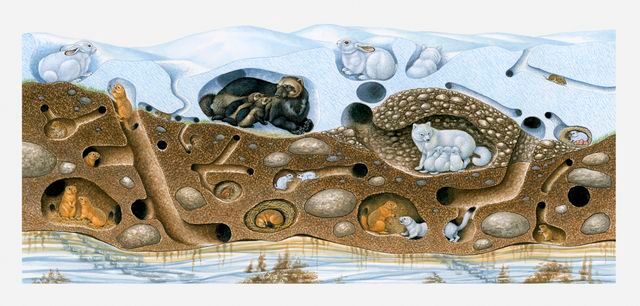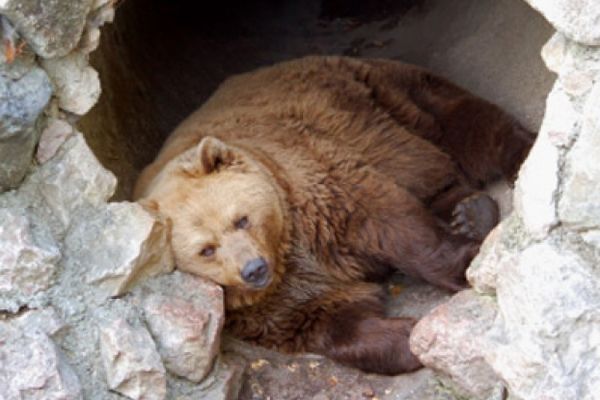
Imagine having to go through puberty more than once in your life. No thanks, right?
Now imagine going through puberty every single year of your life, and right after you've blossomed into manhood. You're expected to go out and immediately get somebody pregnant. This is the plight of the male Arctic ground squirrel, and it's all part of how these animals hibernate.
Advertisement
Arctic ground squirrels (Spermophilus parryii) live out on the North American tundra, where summers are short and glorious, and winters are dark, bitter, and last for eight months. These rodents are the most northerly hibernators of any animal we know about, and the climate and terrain of their habitat poses a major problem to this little mammal: Where can it sleep in a place where all but the topmost layer of soil is frozen solid in permafrost, and ambient wintertime temperatures can be as low as minus 22 degrees F (minus 30 degrees C)? The answer is that it sleeps in the thin layer of soil between the permafrost and the air.

Most of the world's ground squirrel species can dig down deep enough to find a spot that maintains a balmy 32 degrees F (0 degrees C) at the very least, but the Arctic ground squirrels have to hunker down in temperatures not much warmer than the outside air. In order to survive, they have developed ways of building muscle in the summer to burn during the winter, and their bodies have evolved to endure sustained core temperatures of 26.78 degrees F (minus 2.9 degrees C) — lower than the freezing point of water, and the lowest of any known mammal.
In order to accomplish this, males of the species have to stop producing testosterone and shrink their testicles down each fall when they begin to hibernate. But unlike their female counterparts, males store a bunch of snacks — nuts, seeds, berries, mushrooms — in their burrows with them, and when they wake up in March, they spend a couple of weeks sitting around, eating, warming up and pubescing again, experiencing a rush of testosterone and hormones. Just like they did last year. And the rodents will have to deal with their puberty several times over, as the male Arctic ground squirrel lives six years on average; females tend to live for 11 years.
In mid-April, they'll pop out into the open and begin battling all the other males for territory and the attention of the nearly starved females who emerge a couple weeks later, skinny and groggy because they didn't store any food, and because they just warmed up to a halfway decent mammalian body temperature the day before.
But at least these lucky lady squirrels didn't have to go through puberty again.
Advertisement


